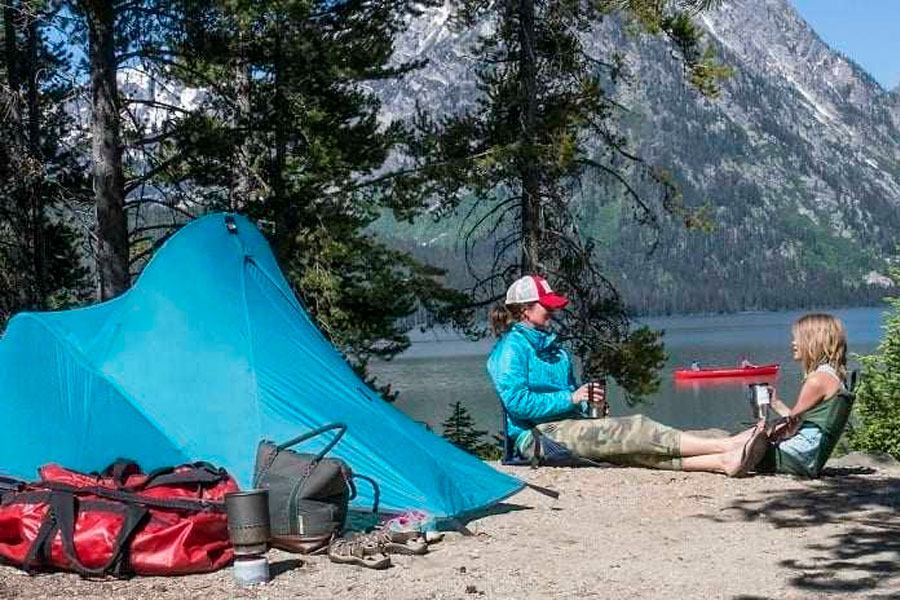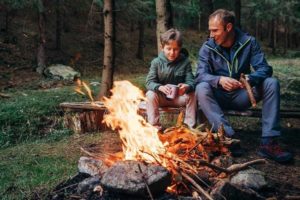The Guide To National Park Camping

In the United States, we’re extremely lucky to have access to such beautiful and natural landscapes that surround us. For those who love nothing more than to get out into nature and see what the world has to offer, our national parks can be a great source of land to explore.
National Park camping gives you an abundance of campsites to choose from but there are rules and regulations in place that you need to follow. To ensure that these campsites are able to be enjoyed for generations to come, it’s essential that you educate yourself on them before you head out and stick to the rules that are in place.
The National Park Service was founded in 1916 and it consists of over 84 million acres of land, and these spots are especially loved for their camp parks. This land has been divided up into 932 national parks which make great sites for camping, however not every one of these allows campers to stay there.
Can You Camp In National Parks?
As there are over 900 parks to choose from, you do have some selection when looking for somewhere to stay. Almost every national park does allow camping but there are some exceptions so it’s best to check before you head out.

There are fees involved for national parks camping, usually ranging from around $10 to $20 per site. These parks can be reserved sometimes for camping but it’s on a first come-first served type of basis so it pays to be prepared and head off early if you plan on camping for the night.
The best way to check what campsites there are and what the fees and booking processes are is to head to the government’s official website for federal campgrounds. This can also show you any rules or regulations in place on that specific site so that you can camp safely and respectfully on your surroundings and others.
What Type Of Camping In National Parks Is Allowed?
There are two types of camping that you can do in a national park, backcountry camping and regular camping that’s done at specified sites. Each comes with its own rules and regulations, so depending on your preference for how you like to camp you’ll need to follow each one.
Backcountry camping refers to those who hike to a camping spot and carry all of their gear with them, setting up once they find somewhere picturesque. As vehicles aren’t permitted in national parks where there aren’t any roads, all of your gear must be carried with you and taken with you when you leave. Not ever park allows this type of camping, so do your research before you go.
Some national parks have fully developed camping grounds that give you almost everything you need including bathroom facilities and cooking facilities. They are accessible by vehicle and make it easier to carry your belongings this way if you would prefer. Again, you’ll need to check the government’s websites before you head off to see what is required of campers in the area.
Whichever style of camping you choose, it’s important to have the right gear to suit the experience. Those who are attempting backcountry camping will need to take extra precautions as they are further from civilization, and campers at specified campsites will need to worry mainly about their comfort.
The Restrictions And Rules To Follow
So, what exactly are the rules in place when you choose to camp at one of our national parks? Here are some things to remember so that you have a pleasant experience and keep the campsites in pristine condition to be enjoyed for years to come.
- Be cautious with pets – If you plan on bringing your dog along camping be sure that you take care of them. Dogs should not pose a threat to wildlife or other campers, and you will need to clean up their waste just as you would your own.
- Leave no trace behind – This rule is followed by all campers and refers to leaving a site exactly as you found it, whether that means no fire or waste left behind.
- Store food correctly – There are many different species of insects and animals out camping so you need to store food correctly when at a national park so you can avoid tempting them to the area.
- Know how to use a fire – most campsites have a fire ring or more already assembled but it’s up to you to know how to work them safely and efficiently and not just leave it until you arrive to learn the skill.
- Understand waste – all national parks require that you dig an appropriate latrine for waste if there is no bathroom facility available, especially when you’re backcountry camping.
Taking Care Of Our Greatest Asset
Camping America is one of the most diverse and picturesque landscapes in the world as we have everything from stretching deserts to pine forests and all those in between. However, it’s up to us as campers to protect the areas that we explore and follow the rules and regulations that are put in place by the National Parks Service.

Camping anywhere, and not just these national parks, requires that we leave no trace behind when we head into the great outdoors. Not only can it be harmful to the environment and animals that live in the area but it can ruin the experience for others as well. If we want to continue to enjoy these campgrounds for generations to come, it’s imperative that we follow the rules in place.
Resources:




